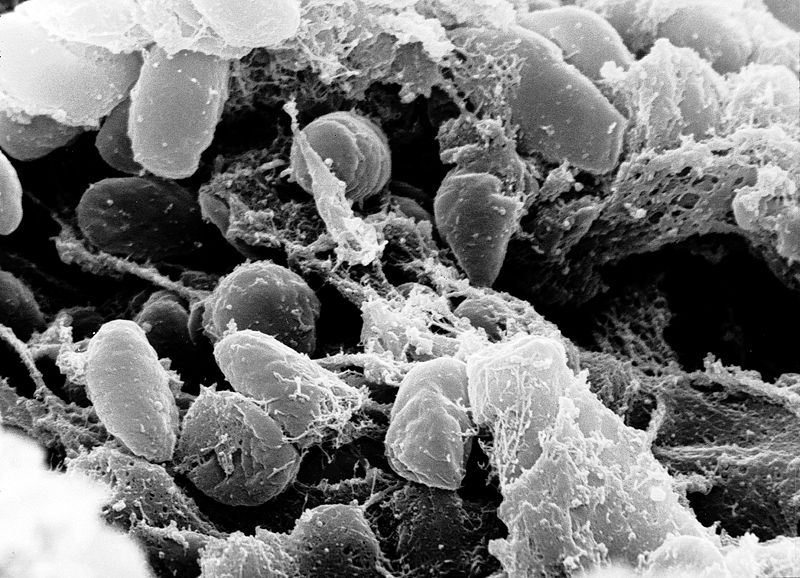24.6: Try It: Nouns and Pronouns
- Page ID
- 175916
Read the following introduction to a research paper written by an undergraduate microbiology student. As you read, critique the use of nouns and pronoun case, clarity, and agreement. The sentences have been numbered to aid you in your comments.

(1) The type-six-secretion-system (T6SS) has been identified as a mechanism by which Vibrio cholera can resist predation by larger predators, such as protozoa, and by which it can alter the environment around it by killing other bacteriums. (2) Other bacteriums also contain the T6SS, but them have not been well studied. (3) In some bacteriums, the T6SS appears to play an active role in host virulence as they assist the bacteriums in altering the host environment. (4) The bacterium Yersinia pestis has genes which encode for several T6SSs, but they have not been well studied in virulence against different types of bacteriums. (5) In this study, we hypothesize that the T6SSs in Y. pestis kill a variety of bacteriums. (6) Identifying the function of these genes in Y. pestis could assist in understanding the mechanism by which the bacteriums infect the host and cause disease. (7) It could also give a novel target for future antibiotics.
[practice-area rows=”4″][/practice-area]
[reveal-answer q=”674310″]Show Answer[/reveal-answer]
[hidden-answer a=”674310″]Throughout the passage, bacterium has been incorrectly pluralized as bacteriums. The correct plural of bacterium is bacteria. You may be more familiar with the word bacteria than the word bacterium because the organisms are so small that they are usually talked about in large groups.
The subject of sentence 1 is “The type-six-secretion-system.” While this is a compound noun, it should be an open compound with no hyphens: “The type six secretion system.” Later in sentence 1, the object pronoun it is misused; we should use the reflexive pronoun itself instead since it is both the subject and the object of the clause: “. . . it can alter the environment around itself by killing other bacteria.”
In sentence 2, we need to use the subject-case they not the object-case them: ” Other bacteria also contain the T6SS, but they have not been well studied.”
In sentence 3, the plural they should be the singular it because T6SS is a singular noun. When you change the pronoun, make sure you use the correct verb as well. Additionally, the sentence might be more clear if altering the host environment is revised to use the possessive pronoun their instead of the: ” In some bacteria, the T6SS appears to play an active role in host virulence as it assists the bacteria in altering their host environment.”
In sentence 4, is the relative pronoun which used correctly? While a lot of people will say that which should not be used when you don’t have commas (and that that should be used instead), it is technically fine and okay to use here.
In sentence 5, there is no explicit antecedent for we; however, we don’t necessarily need one since we is a first-person pronoun. We can assume the antecedent is the writers of the paper.
Sentence 7 begins with the pronoun it. The antecedent for this pronoun is “Identifying the function of these genes in Y. pestis.” While it can have complex antecedents, it might be better in this case to use the pronoun this (perhaps with the addition of another word as well):
- This could also give a novel target for future antibiotics.
- Accomplishing this could also give a novel target for future antibiotics.
[/hidden-answer]
- Try It: Nouns and Pronouns. Provided by: Lumen Learning. License: CC BY: Attribution
- Modification of Type Six Secretion System (errors added). Authored by: Brittany Kartchner. License: CC BY: Attribution
- Yersinia pestis. Provided by: Rocky Mountain Laboratories, NIAID, NIH. Located at: https://commons.wikimedia.org/wiki/File:Yersinia_pestis.jpg. License: Public Domain: No Known Copyright

